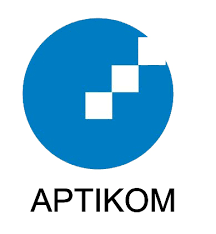Improving YOLO Object Detection Performance on Single-Board Computer using Virtual Machine
DOI:
https://doi.org/10.18196/eist.v5i1.22486Keywords:
Deep learning, single-board computer, virtual machine, edge computing, optimizationAbstract
Single-board computers have gained popularity in the recent decade, largely due to the immense advancements in deep learning. Deep learning involves complex computational processes that are beyond the capabilities of regular microcontrollers, thus necessitating the use of single-board computers. However, single-board computers are primarily designed to operate efficiently in low-power environments. Therefore, optimization is crucial for running deep learning algorithms effectively on single-board computers. In this work, we explore the impact of utilizing the DeepStream framework to run deep learning algorithms, specifically the YOLO algorithm, on NVIDIA Jetson single-board computers. The DeepStream framework can be executed in virtual machines, notably Docker, to improve the performance and portability of the model. Additionally, deploying the Docker virtual machine from removable disks can further enhance its portability and even increase the algorithm's speed. Our benchmarks indicate that real-time streaming of the YOLO algorithm can operate up to 8.5 times faster when deployed from a Docker virtual machine.References
J. Chen and X. Ran, “Deep Learning With Edge Computing: A Review,” Proceedings of the IEEE, vol. 107, no. 8, pp. 1655–1674, Aug. 2019, doi: 10.1109/JPROC.2019.2921977.
M. Satyanarayanan, “The Emergence of Edge Computing,” Computer, vol. 50, no. 1, pp. 30–39, Jan. 2017, doi: 10.1109/MC.2017.9.
U. Drolia, K. Guo, and P. Narasimhan, “Precog: prefetching for image recognition applications at the edge,” in Proceedings of the Second ACM/IEEE Symposium on Edge Computing, in SEC ’17. New York, NY, USA: Association for Computing Machinery, Oct. 2017, pp. 1–13. doi: 10.1145/3132211.3134456.
M. A. Haq, S.-J. Ruan, and J.-H. Chen, “Detecting Obstacle in 3D Space using Monocular Camera,” in 2022 IEEE 4th Global Conference on Life Sciences and Technologies (LifeTech), Mar. 2022, pp. 431–432. doi: 10.1109/LifeTech53646.2022.9754879.
M. A. Haq, S.-J. Ruan, M.-E. Shao, Q. M. U. Haq, P.-J. Liang, and D.-Q. Gao, “One Stage Monocular 3D Object Detection Utilizing Discrete Depth and Orientation Representation,” IEEE Transactions on Intelligent Transportation Systems, vol. 23, no. 11, pp. 21630–21640, Nov. 2022, doi: 10.1109/TITS.2022.3175198.
Md. I. Uddin, Md. S. Alamgir, Md. M. Rahman, M. S. Bhuiyan, and M. A. Moral, “AI Traffic Control System Based on Deepstream and IoT Using NVIDIA Jetson Nano,” in 2021 2nd International Conference on Robotics, Electrical and Signal Processing Techniques (ICREST), Jan. 2021, pp. 115–119. doi: 10.1109/ICREST51555.2021.9331256.
E. Jeong, J. Kim, S. Tan, J. Lee, and S. Ha, “Deep Learning Inference Parallelization on Heterogeneous Processors With TensorRT,” IEEE Embedded Systems Letters, vol. 14, no. 1, pp. 15–18, Mar. 2022, doi: 10.1109/LES.2021.3087707.
G. Jocher et al., “ultralytics/yolov5: v6.1 - TensorRT, TensorFlow Edge TPU and OpenVINO Export and Inference,” Zenodo, Feb. 2022, doi: 10.5281/zenodo.6222936.
I. Miell and A. Sayers, Docker in Practice, Second Edition. Simon and Schuster, 2019.
J. Nickoloff and S. Kuenzli, Docker in Action, Second Edition. Simon and Schuster, 2019.
J. Redmon and A. Farhadi, “YOLOv3: An Incremental Improvement.” arXiv, Apr. 08, 2018. doi: 10.48550/arXiv.1804.02767.
J. Redmon, S. Divvala, R. Girshick, and A. Farhadi, “You only look once: Unified, real-time object detection,” in Proceedings of the IEEE conference on computer vision and pattern recognition, 2016, pp. 779–788.
M. Everingham, S. M. A. Eslami, L. Van Gool, C. K. I. Williams, J. Winn, and A. Zisserman, “The Pascal Visual Object Classes Challenge: A Retrospective,” Int J Comput Vis, vol. 111, no. 1, pp. 98–136, Jan. 2015, doi: 10.1007/s11263-014-0733-5.
A. Paszke et al., “PyTorch: An Imperative Style, High-Performance Deep Learning Library,” in Advances in Neural Information Processing Systems 32, H. Wallach, H. Larochelle, A. Beygelzimer, F. d’Alché-Buc, E. Fox, and R. Garnett, Eds., Curran Associates, Inc., 2019, pp. 8024–8035. [Online]. Available: http://papers.neurips.cc/paper/9015-pytorch-an-imperative-style-high-performance-deep-learning-library.pdf
“PyTorch | SpringerLink.” Accessed: Apr. 01, 2024. [Online]. Available: https://link.springer.com/chapter/10.1007/978-3-030-57077-4_10
“Vision meets robotics: The KITTI dataset - A Geiger, P Lenz, C Stiller, R Urtasun, 2013.” Accessed: Apr. 01, 2024. [Online]. Available: https://journals.sagepub.com/doi/full/10.1177/0278364913491297



